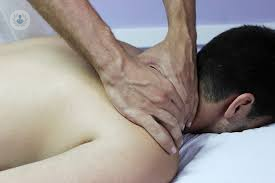

Osteopathy is an alternative medicine where an osteopath detects, treats and prevents health problems by stretching and massaging the patient’s muscles, joints and connective tissues. The techniques and non-invasive treatments are based on a holistic view of the human body where it is important that the bones, muscles and ligaments work together.

Osteopaths are trained health professionals who are registered with the General Osteopathic Council. This means that osteopaths tend to have more training than other therapists such as naturopaths, and any given professional must adhere to a standard of practice. You can complain to the Council if you are not satisfied that they are practising safely.
Who can benefit from osteopathy?
Many people see an osteopath if they have:
- back, neck, or shoulder pain
- a sports injury
- pain due to driving or pregnancy
There is evidence that manual therapy techniques such as those used by an osteopath can be helpful for the problems listed above, especially lower back pain.
Other people see an osteopath to treat conditions such as migraine, painful periods, and depression, but there is very little evidence that osteopathy is an effective treatment.
What does an osteopath do?
An osteopath uses physical manipulation to increase the mobility of joints, relieve muscle tension and enhance blood supply to tissues. The treatment aims to improve the overall health of all body systems by manipulating and strengthening the musculoskeletal framework.
Techniques include stretching, applying gentle pressure and resistance known as osteopathic manipulative medicine (OMM).
Osteopaths also provide advice on posture, exercise to aid recovery and to prevent symptoms from recurring.
What are the alternatives to osteopathy?
Sometimes it is necessary to rule out the other causes of musculoskeletal symptoms and in some cases you will be referred for further investigations, which may include an X-ray, MRI and blood test.
For some conditions, such as arthritis, medication may be required to reduce inflammation, and in serious cases, surgery may be required.
There are also situations where manual therapy techniques used in osteopathy are not suitable and can cause damage, because of the risk of damage to the spine or bones. You might not be suitable to osteopathy if you have:
- osteoporosis
- certain forms of cancer
- arthrtitis
- a bone fracture
- haemophilia
- a blood clotting condition which means you have to take medication such as warfarin
Because osteopaths have extensive clinical training, they should ask about any conditions that might make osteopathy risky, and they should not pressure you into having treatment if it is not suitable for you.
